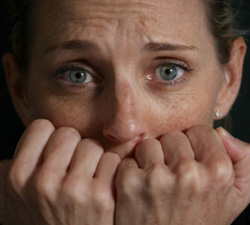Substance Induced Anxiety Disorder
The main features of substance induced anxiety disorder are panic attacks, phobias, anxiety and/obsessions and compulsions . All of these symptoms are known to be caused due to the action of psychoactive substances. There are many substances that can cause symptoms of anxiety while producing the effects of intoxication, or while the person is under complete influence of the drug. These may also be caused during drug withdrawal that is, when a person discontinues the use of that particular drug.
Types:
Various subtypes and categories of substance induced anxiety disorders include:
- Panic Attacks
- Phobias
- Generalized Anxiety
- Obsessions and Compulsions
Apart from this, there are categories of the disorder based on the onset, whether the symptoms began to manifest during intoxication on a particular drug or during the period of withdrawal from that substances. It has been noted that the duration of a substance induced anxiety disorder that initiates during the use of the substance, lasts exactly as long as the substance is in use by the individual. The substance induced anxiety disorder that initiates during the period of withdrawal however can last as long as four weeks once the person has discontinued the use of the substance. The Diagnostic and Statistical Manual of Mental Disorders recognizes the condition as a mental disorder.
Possible Causes and Symptoms:

Substance induced anxiety disorder is commonly caused by drug abuse.
Substance induced anxiety disorder is mainly induced by the action of various drugs which include excessive alcoholism, toxins and medication. Some of the symptoms of anxiety can be caused by alcohol intoxication, cannabis use (also commonly known as marijuana), caffeine, different hallucinogens, amphetamines and other related drugs, cocaine, various inhalants, PCP or phencyclidine and products that are made from it, along with several other less common substances.
Withdrawal from hypnotics, alcohol, anxiolytics, sedatives and various other substances can also lead to the development of different symptoms of anxiety in an individual. There are a number of medicines that can give rise of symptoms of anxiety as well, these include sympathomimetics which include norepinephrine and epinephrine for instance, different analgesics and anesthetic agents, oral contraceptives, anticonvulsants, bronchodilators, medication for Parkinson’s disease, antihistamines, anticholinergic agents, thyroid drugs and insulin, corticosteroids, lithium carbonate, medicines for cardiovascular conditions, antidepressant drugs, as well as some antipsychotic drugs. Different toxins and heavy metal preparations such as paint, insecticides, fuel, carbon monoxide, nerve gases and carbon dioxide also have the potential to give rise to different symptoms of anxiety.
Diagnosis:
It is important to note that there is a prominent difference between substance induced anxiety disorder and an anxiety disorder which results from a medical condition. The difference mainly lies on the basis of clinical manifestations and diagnosis. There are a number of conditions in medicine which include hypoglycemia, hyperthyroidism and hypothyroidism which can individually give rise to the different symptoms of anxiety because the patients that suffer from these conditions regularly take medication against them as well.
Therefore the diagnosis of the disorder becomes rather difficult as the cause in some cases cannot be determined. The diagnosis of the anxiety disorder because of a general medical condition is only confirmed if the symptoms have been determined to be caused as a result of the medical condition or disease. It is also important to know that there are prominent differences between substance induced anxiety disorder , primary psychotic disease, withdrawal from intoxication drugs, dementia and delirium.
Demographics:
There is not much information related to the demographics of substance induced anxiety disorder . It is certain however, that the disorder is most commonly found, and likely to occur in people who frequently abuse drugs or alcohol.
Treatments:
The course of the treatment is determined by the anxiety symptoms being experienced by a patient. The most important treatment is to stop drug abuse, if it is taking place but if the condition is caused by a prescription drug necessary to treat a general medical condition then the symptoms of the anxiety disorder have to be treated. The course of treatment is generally similar to the treatment given for a primary anxiety disorder which includes OCD, panic disorders, generalized anxiety disorder and phobias. Treatment usually includes medications such as antidepressants or anti-anxiety agents and psychotherapy.
Prognosis:
The symptoms of anxiety that occur due to intoxication with a substance tend to substance once the substance is stopped or eliminated. The symptoms may persist depending upon the half-life of the substance, which means the time it takes for the chemical to get completely eliminated from a person’s body. The symptoms can persist for hours, days or even weeks. OCD (obsessive compulsive disorder) that is induced by the substance may require more intensive treatment as the symptoms of OCD may not completely disappear even after the substance is stopped.
References:
American Psychiatric Association. (2001). Diagnostic and statistical manual of mental disorder (4thed.).Washington, D.C.
Kaplan, H. I. & Sadock, B. J. (n.d.)Kaplan and Sadock’s synopsis of psychiatry: Behavioral sciences.Clinical Psychiatry.
National Center for Biotechnology Information. (2012). Substance-induced disorders. Retrieved from http://www.ncbi.nlm.nih.gov/books/NBK64178/.





